Kavala - Lovo for lunch
4A Lovo for lunch Kavala Janet Jully 26 "What's the menu for?" I asked gesturing out the door. Taped to the wall at the shop entrance was a notice, mostly written in Fijian, including 'menu' and '$20'.
"It's for a lovo," the girl behind the counter said, "food cooked in the ground." Her mother told us "Whole chicken, fish, palusami, and raw fish, at noon on Friday." *** We were at the local bread shop in Kavala Bay. We'd motored along the edge of a bank of seemingly impenetrable mangroves when an opening appeared suddenly. Peering into the muddy water we monitored the depth to make sure we didn't catch the outboard propeller on the bottom. After paddling the last few metres we tied the dinghy to a tree, and asked the first person we saw where the shop was.
"Up there," said the woman, "blue house." She pointed to a muddy track.
The locating of shops here is very different to how we do it in New Zealand. Foot traffic - not a consideration. The shop in the bay near where Navire is anchored is a 15-minute walk from the nearest village.
"Is the shop over there because it has a wharf?" I had asked Luisa, our local host.
"No, that is where their family land is." She said matter of factly.
Same with the bread shop, up the back of three other houses and no signage down on the road to say its there. I guess everyone knows where it is.
*** On Friday our French-Canadian neighbours, from yacht Vanille, motored over to join us for the lunch outing. On the way across the bay we stopped in at Solotaviu Village to deliver a chocolate cake to Luisa and her family, a gift to say thank you for their help. This village seemed moderately prosperous (from yaqona production) and giving basic food items like tinned corned beef didn't seem appropriate. But a cake, we thought, is a treat because most people don't have conventional ovens.
Luisa was out so we gave the cake to her mother. Within seconds ten small children materialized. They sat on the mat in two rows like they were at school, eyes glued to the cake the whole time we were there. Later we heard that almost every child in the village had a piece.
Motoring on we arrived at the rocky inlet near the shop. We guided Jean-Pierre and Dana up the muddy path to the blue house. Paying our $20 we sat outside on a concrete slab we discussing where we would eat the food. Two women emerged from the shop with our 'lovo', two baskets woven from coconut palms loaded with foil wrapped food, each topped with a pink hibiscus flower.
Before we'd had a chance to unload our plates and cutlery and set up our picnic on the concrete the women said "Wait!", and dashed inside. Moments later they came out carrying a table between them and proceeded to set it up under a little shelter on the edge of the platform. Then out came four chairs and a tablecloth.
They understood kaivlangi needs.
Table set, I undid the foil bundles releasing smoky meaty flavours. A whole chicken, a piece of rather well done tuna, the best palusami (taro leaves cooked in coconut) I've ever had, a whole breadfruit, and two separate containers, one with kokoda, marinated fish, and the other cassava in caramel sauce. As we were packing up one of the women came to chat. It transpired that the lovo was a fundraiser. Each family with children at the school had to contribute $480 for various repairs. So much for Bainamrama's free education policy.
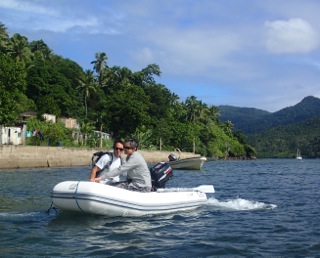
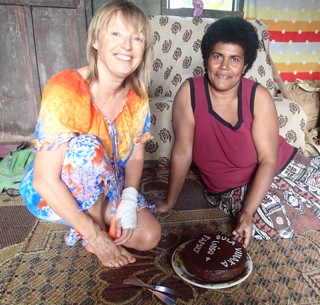
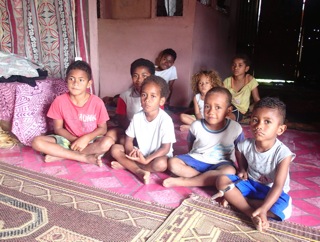
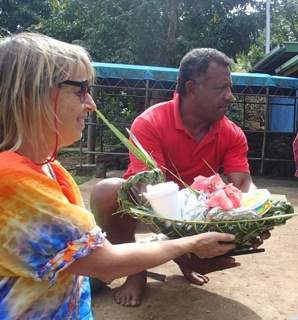
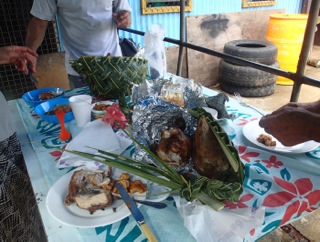
Add new comment